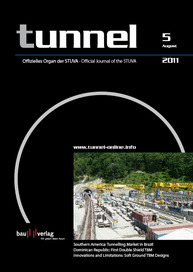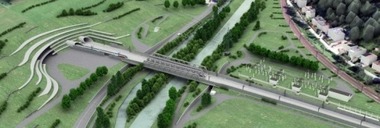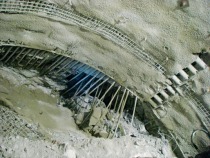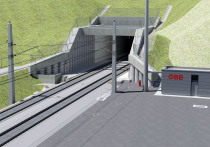Koralm Tunnel: Work starts on main Section
The Koralm Tunnel represents the core of the new 130 km long Koralmbahn, being set up between Graz and Klagenfurt, a twin-track high-speed line designed for speeds of up to 200 km/h estimated to cost in excess of 5 b. euros. It is a part of the Baltic-Adriatic axis of the TEN corridor 23 from Danzig via Warsaw and Vienna to Trieste, Venice and Bologna. Construction operations began in 2001.
The 2 bores of the Koralm Tunnel run at a centre distance some 40 m apart and are linked with each other every 500 m by cross-passages; an emergency stop will be located at the centre of the tunnel.
Constr...




